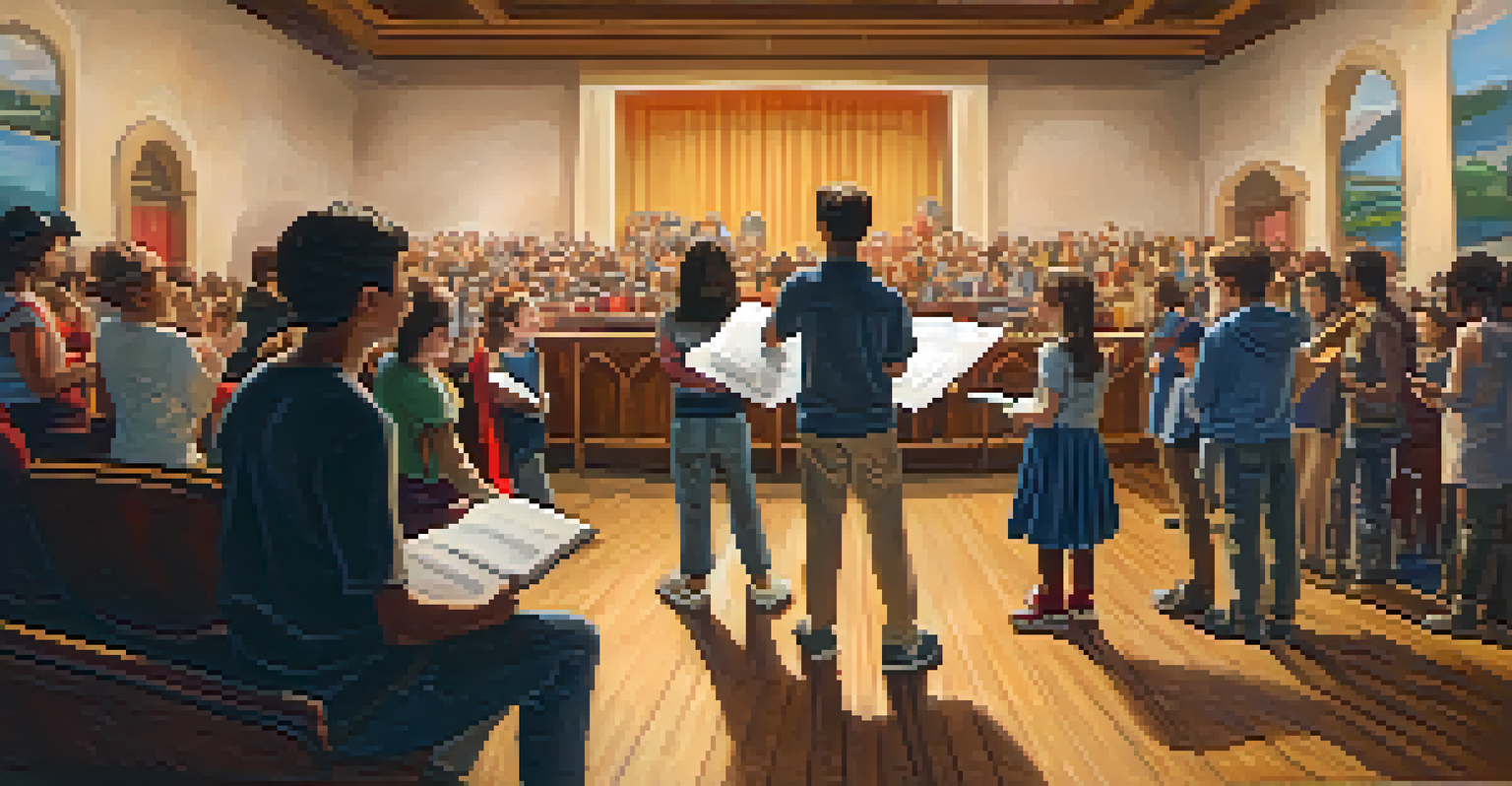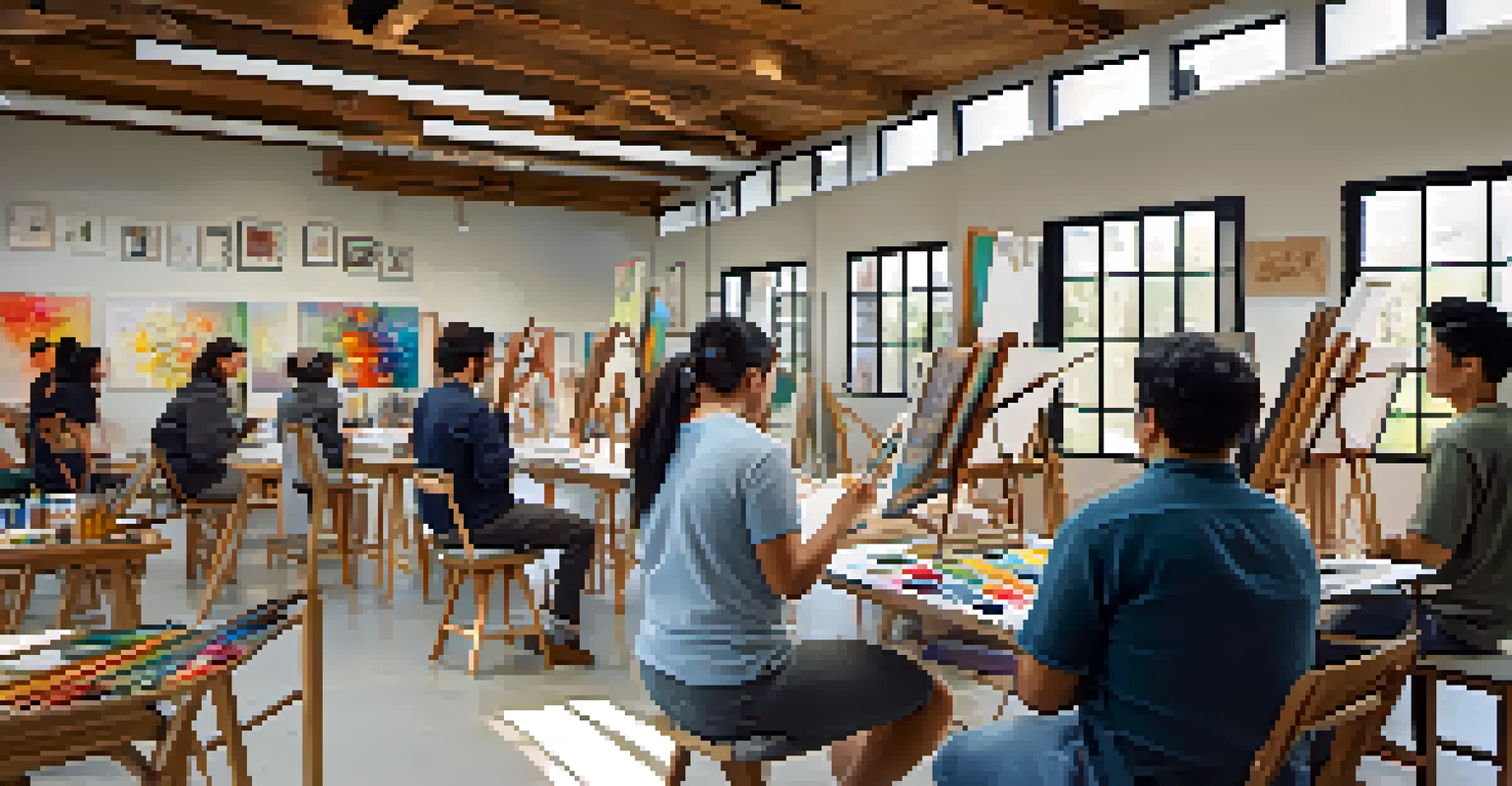Integrating Arts Education with Community Engagement

Understanding the Importance of Arts Education
Arts education plays a pivotal role in fostering creativity and critical thinking among students. It allows them to express their thoughts and emotions in unique ways, which can enhance their overall learning experience. Moreover, engaging in the arts can improve students' academic performance by cultivating skills such as discipline and collaboration.
Art is the most beautiful of all lies; it is the lie that enables us to see the truth.
In today's fast-paced world, creativity is more important than ever. Employers are increasingly seeking individuals who can think outside the box and approach problems with innovative solutions. Arts education equips students with these vital skills, preparing them for future challenges in various fields.
Furthermore, arts education can contribute to emotional intelligence, helping students develop empathy and connect with others. This emotional growth is essential not just for personal development but also for building strong, cohesive communities.
Defining Community Engagement in Education
Community engagement refers to the process of involving community members in educational activities to enhance learning experiences. This could be through partnerships with local organizations, hosting events, or collaborative projects that benefit both students and the community. The goal is to create a sense of belonging and shared purpose.

When schools and communities work together, the benefits are reciprocal. Students gain real-world experience and insights from community members, while the community can harness students' energy and creativity for local projects. This collaboration fosters a deeper connection between learners and their environment.
Arts Boost Creativity and Skills
Arts education enhances students' creativity, critical thinking, and emotional intelligence, preparing them for future challenges.
Additionally, community engagement encourages students to become active citizens. By participating in local initiatives, they learn the importance of civic responsibility and the impact they can have on the world around them.
Benefits of Integrating Arts Education with Community Engagement
Merging arts education with community engagement creates a rich tapestry of opportunities for students and the broader community. It allows students to apply their artistic skills in real-world contexts, making their learning more relevant and impactful. For example, a mural project can beautify a neighborhood while allowing students to express their artistic voice.
The arts are an integral part of education, just like reading, writing, and arithmetic. Music, dance, theater, and the visual arts help students learn and apply the skills they need for lifelong success.
Moreover, this integration can enhance cultural understanding. When students collaborate with community members from diverse backgrounds, they gain insights into different perspectives and traditions, promoting inclusivity and appreciation for diversity. This exposure is invaluable in today's globalized society.
Lastly, such initiatives can boost community pride and cohesion. When students contribute to their neighborhoods through art, it fosters a sense of ownership and responsibility, encouraging everyone to take pride in their local environment.
Successful Examples of Arts and Community Integration
Numerous programs around the world showcase the power of integrating arts education with community engagement. For instance, the 'Art in the Schools' initiative pairs students with local artists to create public art projects that reflect their community's history and values. These collaborations not only beautify public spaces but also create lasting relationships between students and artists.
Another example is community theater programs, where students can take part in productions that address local issues. Such experiences provide a platform for young people to express their views while engaging the community in important conversations. This blend of art and dialogue can lead to meaningful change.
Community Involvement Enriches Learning
Engaging with the community provides students real-world experiences, fostering civic responsibility and a sense of belonging.
These examples illustrate that when arts education is connected to community initiatives, it not only enriches the students' learning journey but also leaves a positive imprint on the community as a whole.
Strategies for Effective Integration
To effectively integrate arts education with community engagement, schools should start by identifying local needs and resources. Engaging with community leaders can provide valuable insights into what initiatives would resonate most with both students and residents. This collaborative approach ensures that the projects are relevant and beneficial.
Additionally, schools can develop partnerships with local art organizations or businesses to create mentorship opportunities. These connections can lead to workshops, internships, and real-world experiences that enhance students' educational journeys. Such partnerships can also help sustain ongoing projects, ensuring lasting impact.
Finally, incorporating feedback from students and community members is crucial. By listening to their experiences and suggestions, educators can continually refine their approaches, making the integration of arts and community engagement even more effective.
Challenges to Overcome in Integration
Despite the numerous benefits, integrating arts education with community engagement does come with its challenges. One significant barrier is the lack of funding, as arts programs are often among the first to be cut from school budgets. This limitation can hinder the ability to execute community projects that require resources.
Another challenge is the varying levels of commitment from community stakeholders. Some organizations may be enthusiastic and eager to collaborate, while others might lack the resources or interest. Building strong, collaborative relationships takes time and effort, which can be daunting for educators.
Integration Fosters Cultural Understanding
Combining arts education with community projects promotes inclusivity and appreciation for diverse perspectives.
Lastly, there may be skepticism about the value of arts education among some community members. It’s essential to communicate the benefits clearly and showcase successful projects to demonstrate how arts integration can lead to positive outcomes for both students and the community.
The Future of Arts Education and Community Engagement
Looking ahead, the integration of arts education with community engagement is likely to become increasingly important. As communities continue to evolve, educational institutions will need to adapt to meet the changing needs of both students and residents. This adaptability can enhance the relevance of arts education in modern curricula.
Moreover, with the rise of digital platforms, there are even more opportunities for collaboration. Virtual art exhibits, online workshops, and social media campaigns can connect students with community members far beyond their geographical limitations. This digital approach can foster global conversations and broaden horizons.

Ultimately, the future of arts education intertwined with community engagement holds the promise of creating not just better students, but also more interconnected and vibrant communities. By prioritizing this integration, we can cultivate a culture of collaboration, creativity, and civic responsibility.